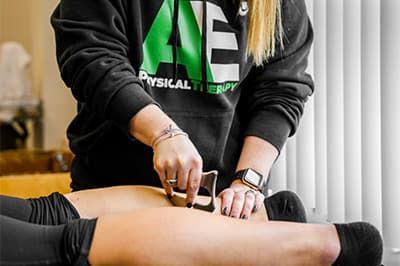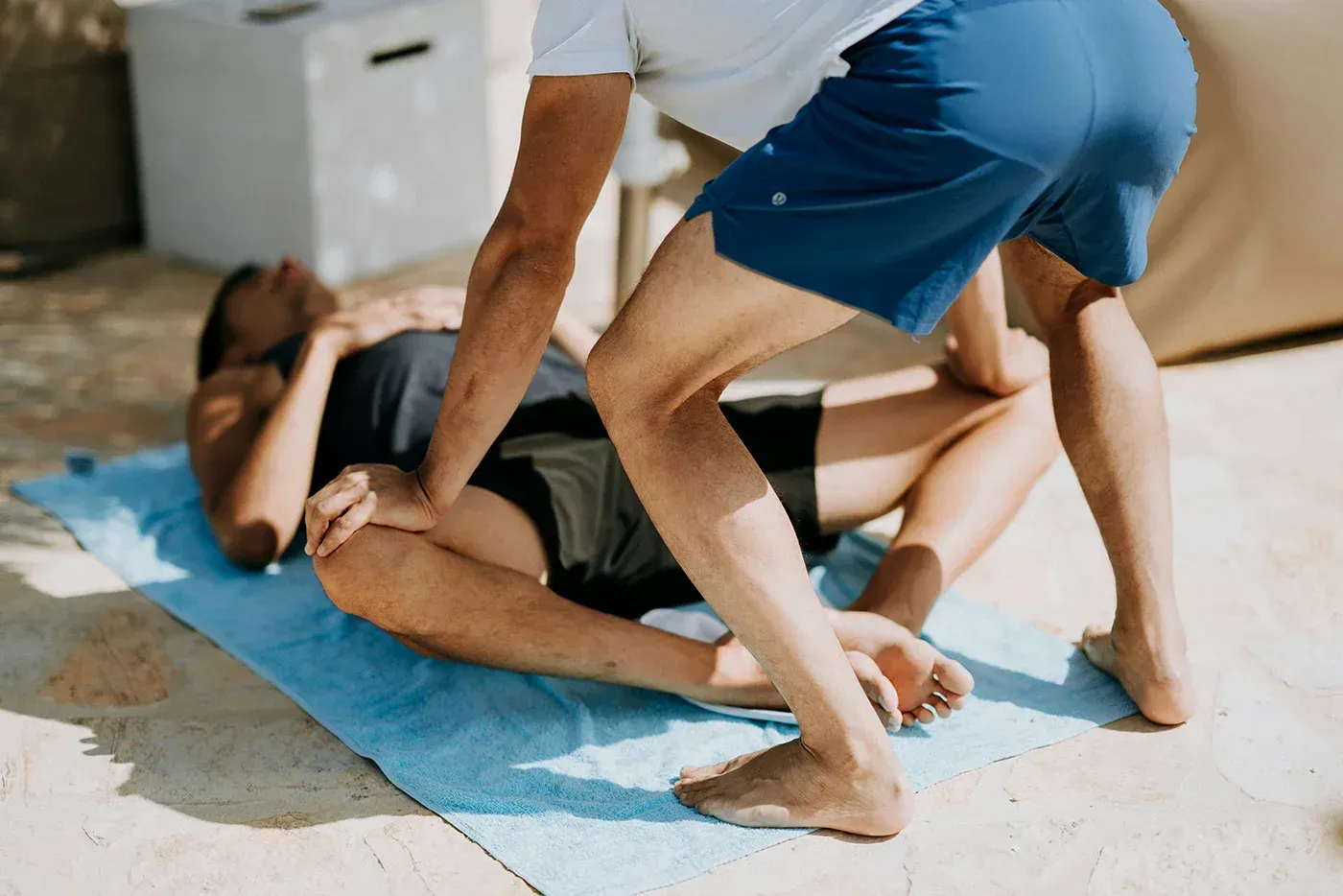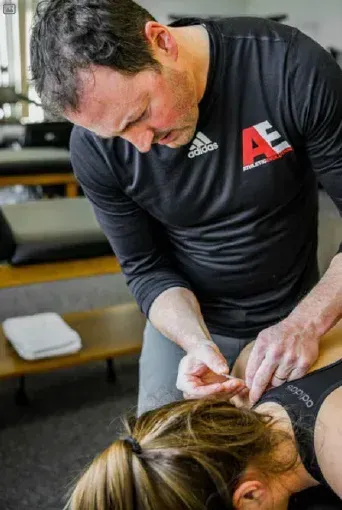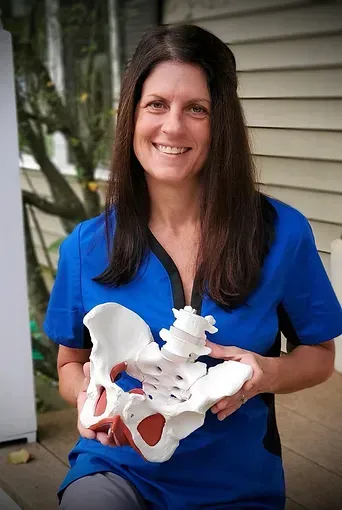Let Us Help You Achieve Your Goals
We're dedicated to helping you achieve your goals and reach your full potential.
Trigger Point Massage
This helps to release muscle tension and can be done internally or externally.
Scar Management
Treat scar tissue and boost soft tissue mobilization around the site of the score.
Postural Movement
We’ll examine and improve your posture when sitting, standing and completing other tasks.
Bladder & Bowel Training
This is a form of behavior therapy that can help treat urinary incontinence.
Muscle Energy Techniques
METs are an advanced type of stretch, a manual therapy that can help reduce pain.
Electrical Stimulation
A painless and effective procedure that treats urinary incontinence, frequency and urgency.
Pelvic Floor Exercises
Exercises to strengthen the pelvic floor muscles can be done during a session and at home.
Stretching, Yoga & Strength
We often incorporate traditional strength-building exercises, stretching and yoga.
Nutrition & Lifestyle
Nutrition, lifestyle & hormonal health may also be addressed as part of pelvic floor therapy.
What to Expect at a Pelvic Floor Therapy Session
Initial Evaluation
The initial evaluation is typically 75-90 minutes. This is the time where we get an opportunity to review not only why you are here, but your personal history, events, past treatments, and your own thoughts about why you are having this problem. I spend more time on the initial intake, reviewing forms and talking with you than on any other part of the exam. Establishing a safe connection is important in helping us navigate these very personal and often rarely talked about issues. Listening to clients and asking the right questions often helps set us on the right path for treatment.
Movement Assessment
As part of the initial evaluation, I perform a comprehensive assessment of movement, strength, reflexes, flexibility, balance and palpation of bony landmarks and pain. I will also look at your posture, alignment and breathing. If indicated there may be an internal pelvic or rectal evaluation to determine the cause of pain, weakness or incoordination of the muscles causing the dysfunctions such as incontinence, prolapse, or constipation.
Internal Exam
The internal examination is only performed with your written and verbal consent, explained with a pelvic muscle model first, and can be stopped at any time. You are also welcome to bring someone with you to be present during the examination. After the evaluation is completed, we discuss the findings and determine a plan of action to help you reach your goals, and when/ if you need to return for follow up.
Personalized Care
After your initial evaluation, movement assessment and exam, we'll design a personalized care plan for your specific needs. Everything we do will be tailored to your symptoms and goals. We'll review your care plan often to ensure your support changes as you change.
Our Services

Injury Prevention / Return to Sport
Our Return to Sport Program is designed for our patients who are nearing the end of their Physical Therapy treatment at AE PT, but are either unprepared to start training on their own or could benefit from a bridge between therapy and traditional sports specific training. Too often we see patients/athletes being discharged from Physical Therapy because they can walk around pain free, but are not prepared for the athletic demands of their sport or the physical demands of their job or lifestyle. This unfortunately can lead to a set-back or another injury. Our therapists will work in conjunction with our strength coaches, using your initial evaluation, treatments, and a post treatment evaluation to essentially create a road map to lead you from therapy back to your sport. We offer a variety of return to sport programs so that our patients can choose an option that best fits what they need and want. Each program will be customized just for you, and feature our strength coaches and therapists working together to best serve you. Our team will work with you to find the best available option for you and your long term health.

Soft Tissue Massage, Myofascial Release, & Instrument Assisted
Soft tissue massage is a type of massage therapy that focuses on the manipulation of soft tissues such as muscles, tendons, ligaments, and fascia. It is a hands-on technique that is used to treat a range of physical ailments, including back pain, neck pain, headaches, sports injuries, and more.
Instrument assisted soft tissue mobilization (IASTM) is a skilled myofascial intervention used for soft-tissue treatment. It is based on the principles of cross fiber massage.
It is applied using instruments that are usually made of stainless steel with beveled edges and contours that can conform to different body anatomical locations and allows for deeper penetration. It is used for the detection and treatment of soft tissue disorders.
Instruments effectively break down fascial restrictions and scar tissue. The ergonomic design of these instruments provides the clinician with the ability to locate restrictions and allows the clinician to treat the affected area with the appropriate amount of pressure

Active Isolated & PNF Stretching
Active Isolated Stretching
This technique involves holding a stretch for two seconds at a time, and then repeating the stretch while increasing the resistance by a few degrees each time. AIS uses reciprocal inhibition, which is a two-second hold at the end of the movement pattern.
PNF stretching
This advanced flexibility training technique involves stretching and contracting the targeted muscle group. PNF stretching includes techniques like hold-relax, contract-relax, and hold-relax with agonist contraction.
Combining PNF techniques with active stretching can help increase mobility and maximize the effectiveness of both techniques. For example, you can add a series of contract-relax impulses to an active stretching exercise like the kneeling lunge

Trigger Point Release & Neuromuscular Techniques
Trigger point release, also known as trigger point therapy or myofascial release, is a massage technique that involves applying pressure to specific points in the body to relieve pain and tension

Joint mobilization and Spinal Manipulations
Joint mobilization is a physical therapy technique that involves a physical therapist manually moving a patient’s joint to improve its range of motion, reduce pain, and increase joint function.

Selective Functional Movement Assessment & Functional Movement Screen
The SFMA is a clinical model used to assist diagnosis and treatment of musculoskeletal disorders by identifying dysfunctions in movement patterns. The SFMA is meant to be used by physiotherapists / physical therapists, athletic trainers, chiropractors, and physicians.

Cupping & Dry Needling
Cupping therapy is an alternative medicine technique that uses suction to create a vacuum on the skin to promote healing.
Dry needling is a treatment that involves inserting thin needles into the skin to treat pain and movement issues.

Meet the Team
Jessica Ekberg, OTR/L
Certified Pelvic Floor Therapist
My name is Jessica Ekberg and I am a business owner, avid runner, pants peer, prolapse owner, postpartum pain sufferer, mom of 2, and certified pelvic floor therapist!
I feel so lucky to do work that I am extremely passionate about, helping men and women be the best version of themselves they can. All too often we give up on part of us because of injury or dysfunction. I truly believe we have to reframe the way we think of taking care of ourselves. My goal is to bring Pelvic Floor Health discussions to the forefront of what I do, to help dispel myths and educate about facts. I want to help people understand what Pelvic Health is all about.
When I began this journey into pelvic health as a patient, I had no idea how many people struggled with chronic pain disorders, bowel, bladder, and sexual dysfunction. Many people shy away from talking about bodily functions and parts. The lack of information and effective treatment in the community can leave people suffering in silence. Now that I have been working in pelvic health for almost 5 years, I realize just how critical pelvic health is to all of us. No one tells you how important your pelvic floor is to your overall health. Pelvic floor dysfunction doesn’t generally happen overnight which makes it easy to ignore and put off getting treatment. Most people seek Pelvic Floor therapy once the dysfunction prevents them from doing the things they have to do or love to do. I am a perfect example. Returning to running post baby left me with A LOT of problems.. and this my friends is when I started my pelvic health journey.
If I could offer up one piece of advice it would be to stop ignoring or putting off taking care of yourself!! YOU ARE WORTH IT.
I can’t tell you how many times I have said to myself “I wish someone had told me this information” because it all makes so much sense now. The core makes up the foundation of the body and if it is not functioning properly, it can impact several systems within the body. Some of the problems that clients present with are incontinence, hernias, pelvic pain including hips/back/genital/rectal/tailbone, respiratory difficulties, heavy/painful periods, menopause, endometriosis, pre/during/postpartum care, constipation, sexual (including erectile) dysfunction.
I have always loved the body and its amazing ability to adapt, compensate and heal so that we can function each day. My approach involves assessing the whole body, putting the puzzle together in order to determine the driver of the dysfunction and then developing a treatment plan to solve the problem. I know first hand how valuable good health is for quality of life. My goal is to help clients return to doing all of the things they love, as quickly and safely as possible.
Looking forward to meeting and working with you!
Mission
I know what it feels like to be incontinent, have prolapse, have chronic low back pain, plantar fasciitis, deal with infertility, give birth two times over, endure trauma and not be able to do all the things I love or need to do because something in my body was not working efficiently.
I have worked hard to overcome all of the “issues” in my body and now, I’ve made it my mission to help others do the same.
I have always loved the body and its amazing ability to adapt, heal, and compensate so we can do the things we need to do every day.
I know how valuable good health is for quality of life. My goal is to help you return to all of the things you love, and be the best version of you as quickly & safely as possible.
Certifications
Certified Restore Your Core® Teacher
Restore Your Core® is a comprehensive exercise program created for women who have core and pelvic floor dysfunction. The program combines sustainable and functional yoga and Pilates-based exercises with the fundamentals of biomechanics, aiming to empower and educate women for the long term.
Certified Body Ready Method pro®
Body Ready Method® is based on 5 pillars: Upper Body Mobility, Core, Pelvis, Pelvic floor and Movement Patterns. Incorporating BRM® pillars in pregnancy can help create a more efficient birth, minimize aches and pains, optimize recovery, and minimize abdominal separation and pelvic floor dysfunction.
Four Horsemen of Male Pelvic Pain
A Masterclass on Male Pelvic Pain
This pelvic floor therapy masterclass is a comprehensive course designed to equip physical therapists and pelvic floor therapists with the necessary skills to diagnose and treat male pelvic pain effectively.
Coursework
Integrated Pelvic Care
Founding member
Clinical Excellence Network for Male Pelvic Health, a leading men’s health organization that educates pelvic health clinicians about male pelvic health.
OT Pioneers: Introduction to Pelvic Floor Therapy for Occupational Therapists
Lindsay Vestal MS OTR/L, The Functional Pelvis
Sexual Medicine in Pelvic Rehab
Herman and Wallace
Just Breathe 101: Athletic Performance
Embodia
Holistic Treatment of the Postpartum Body & Holistic Treatment of the Pregnant Body
The Institute for Birth Healing
Colorectal Manual Assessment & Treatment Techniques
Laura Rowan, OT/R
Beyond Kegels
Janet Hulme
Biopsychosocial: It’s More Than Just a Buzzword
Embodia
Pelvic Rehab Manual Assessment & Treatment Techniques Course
Laura Rowan, Essential Pelvic Health
Male Pelvic Floor Function, Dysfunction and Treatment
Herman and Wallace
Pelvis Reset for Lower Back Pain
Daily OM
PCES 2.0 Pregnancy & Postpartum Corrective Exercise Specialist
Sarah Duvall, DPT - Core Exercises Solutions
Patient Testimonials

Hi Jessica! I can’t believe it’s already been 2 weeks but wanted to send along an update! Baby girl was born on 2/11/25 in the am, had a very smooth and successful c-section. They were right, she’s big lol weighed 8lb15oz. I have to tell you that the few sessions I had with you put me in such a good position for recovery. I feel so good only 2 weeks postpartum. Everyone should utilize pelvic floor therapy, it’s so underrated!!!
Seeing Jessica was the best thing I have done for not just my pelvic floor pain but my over all fitness.
Jess is amazing for pelvic floor therapy…This is the only thing that has helped. Highly recommend her services!!
I would recommend Jessica to anyone with pelvic floor pain.
Jessica is knowledgeable, funny and has helped me so much. She is the best!
I really appreciated Jessica’s thorough approach. It was wonderful to finally find a provider who could assess my whole body.
Squeezing the lemon is the real deal! I made it through a seven-stage match on Saturday without issue. I was on my feet for seven hours straight. I had to run 15-20 yards on one stage. My hip was sore at the end of the day, but it did not fall apart, plus I was able to walk on Sunday. I would not have been able to do that without our work together.
Pelvic Floor Therapy FAQ
Why should I see a pelvic floor therapist?
A pelvic health therapist (Occupational therapist or Physical therapist) can help with assessing and alleviating/managing persistent pain and discomfort in the pelvic floor and musculoskeletal (back, hip, knee pain), as well as developing of a personalized approach and strategy for achieving optimal bowel, bladder and sexual function.
What is the pelvic floor?
The pelvic floor is a group of muscles that form a supportive sling at the bottom of the pelvis. These muscles are the foundation for organs like the bladder, uterus, prostate and rectum.
What does the pelvic floor do?
The pelvic floor muscles are working 24/7 and have 5 main duties: first they assist in supporting abdominal and pelvic organs. Next they help with stabilization. They work with the core muscles to support and stabilize your hips and trunk allowing you to maintain an upright posture during functional activity.
They help with lymphatic drainage to manage things like bloating. Next they maintain continence, they helping the bladder and rectum to open and close both when you need them to and need them NOT to.
Lastly they help with sexual sensation. Often times when the pelvic floor is overused or underused the result is pain or dysfunction in the areas mentioned above.
Is an internal pelvic exam a must?
In internal exam is not a must however it is helpful for more accurate diagnosis and treatment of certain conditions. Each person is different and the plan that is developed is personalized to meet your needs in whatever way you are comfortable.
What if I’m pregnant?
Being pregnant is not a reason to avoid seeing a pelvic floor therapist. In fact there are several benefits to this.
“Isn’t it normal to leak once you get older or after having kids?”
The answer is NO!!! That’s why I’m here to help! It is possible to get older and have children without experiencing bladder leaks. Pelvic floor therapy can help.
Let's Talk
We will get back to you as soon as possible.
Please try again later.
Let Us Help You Achieve Your Goals
We're dedicated to helping you achieve your goals and reach your full potential.

